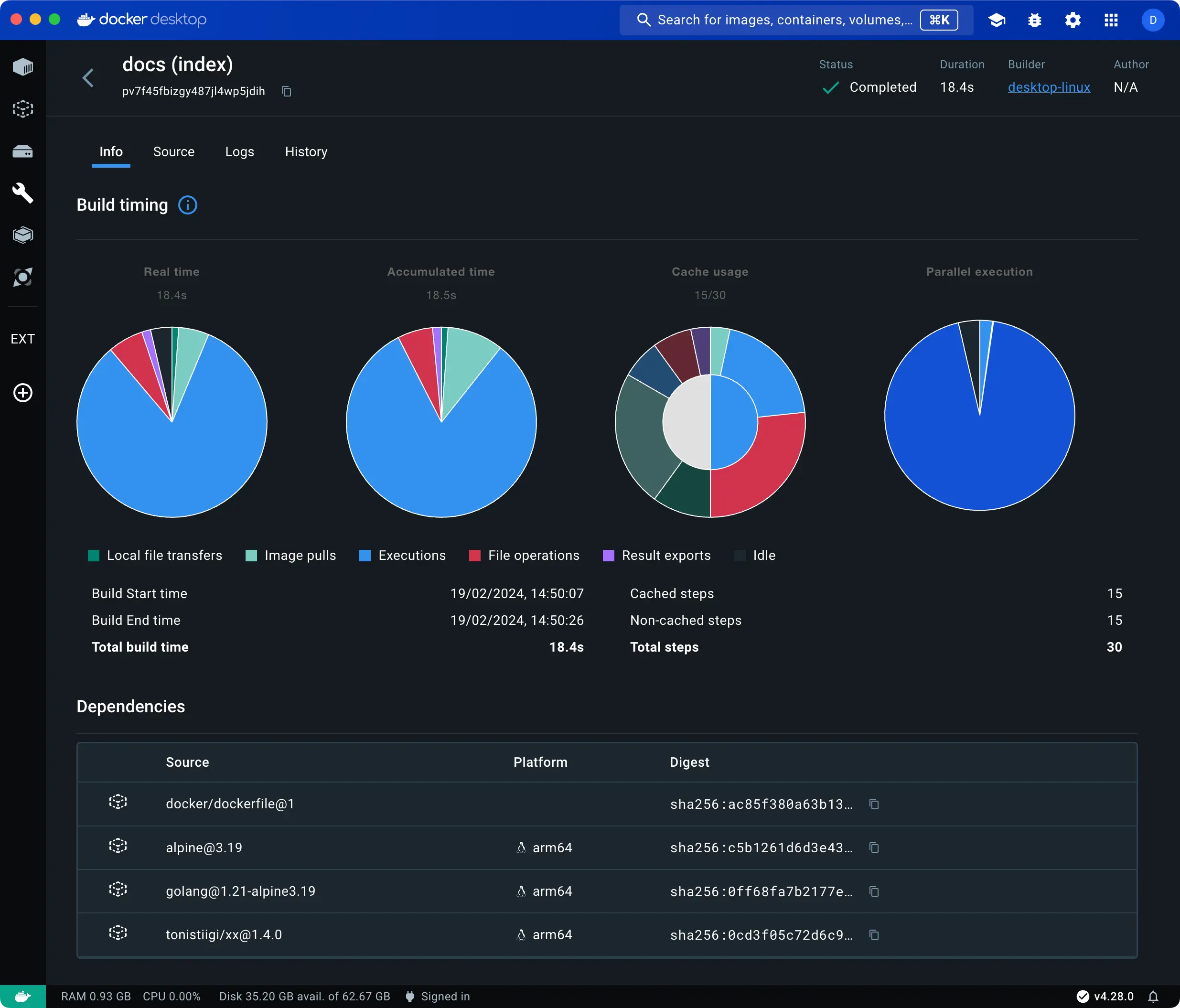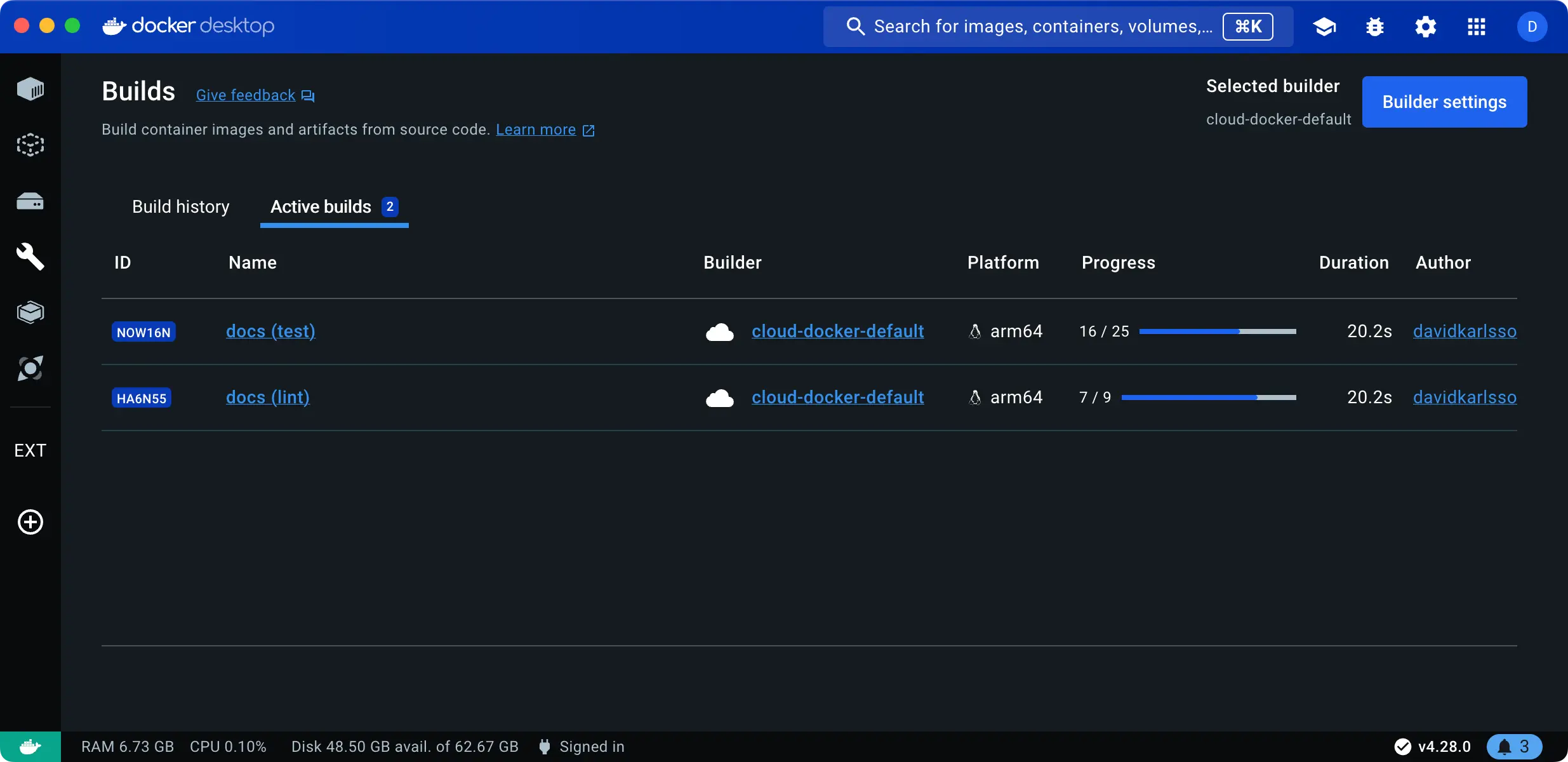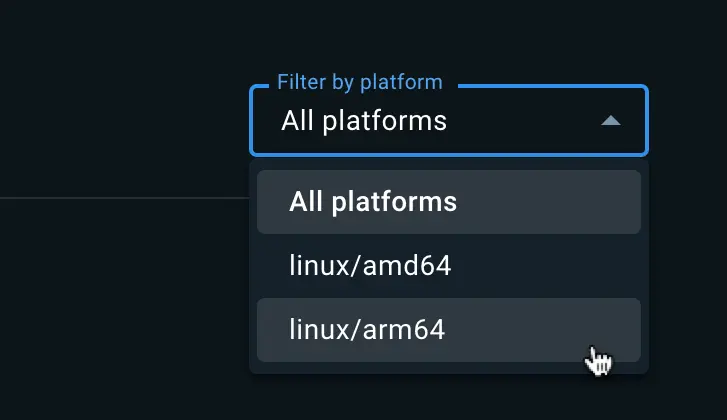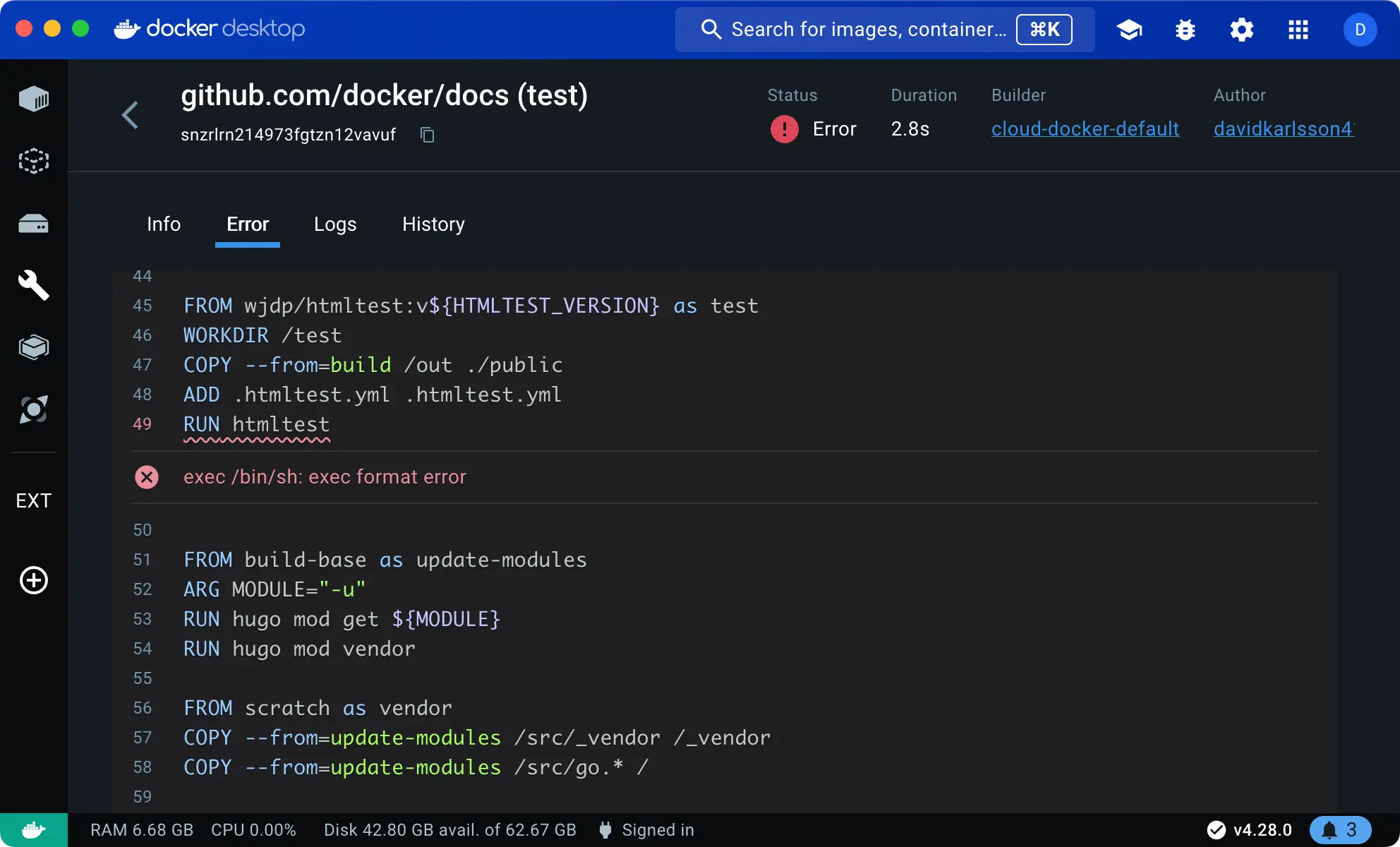Explore Builds


The Builds view is a simple interface that lets you inspect your build history and manage builders using Docker Desktop.
Opening the Builds view in Docker Desktop displays a list of completed builds. By default, the list is sorted by date, showing the most recent builds at the top. You can switch to Active builds to view any ongoing builds.


If you're connected to a cloud builder through Docker Build Cloud, the Builds view also lists any active or completed cloud builds by other team members connected to the same cloud builder.
Show build list
Select the Builds view in the Docker Dashboard to open the build list.
The build list shows running and completed builds for your active builders. The top-right corner shows the name of your currently selected builder, and the Builder settings button lets you manage builders in the Docker Desktop settings.
Running builds are displayed in the top section of this view, with information about the build target and progress.
The lower section of the view shows your recent builds. You can select any of the builds from the active builds or completed builds section to view detailed information, such as logs, a performance breakdown, cache utilization, and more.
The build list doesn't include builds for inactive builders. That is, builders that you've removed from your system, or builders that have been stopped.
Inspect builds
To inspect a build, select the build that you want to view in the list. The inspection view contains a number of tabs.
The Info tab displays details about the build.
If you're inspecting a multi-platform build, the drop-down menu in the top-right of this tab lets you filter the information down to a specific platform:


The Source details section shows information about the frontend frontend and, if available, the source code repository used for the build.
Build timing
The Build timing section of the Info tab contains charts showing a breakdown of the build execution from various angles.
- Real time refers to the wall-clock time that it took to complete the build.
- Accumulated time shows the total CPU time for all steps.
- Cache usage shows the extent to which build operations were cached.
- Parallel execution shows how much of the build execution time was spent running steps in parallel.


The chart colors and legend keys describe the different build operations. Build operations are defined as follows:
| Build operation | Description |
|---|---|
| Local file transfers | Time spent transferring local files from the client to the builder. |
| File operations | Any operations that involve creating and copying files in the build. For example, the COPY, WORKDIR, ADD instructions in a Dockerfile frontend all incur file operations. |
| Image pulls | Time spent pulling images. |
| Executions | Container executions, for example commands defined as RUN instructions in a Dockerfile frontend. |
| HTTP | Remote artifact downloads using ADD. |
| Git | Same as HTTP but for Git URLs. |
| Result exports | Time spent exporting the build results. |
| SBOM | Time spent generating the SBOM attestation. |
| Idle | Idle time for build workers, which can happen if you have configured a max parallelism limit. |
Build dependencies
The Dependencies section shows images and remote resources used during the build. Resources listed here include:
- Container images used during the build
- Git repositories included using the
ADDDockerfile instruction - Remote HTTPS resources included using the
ADDDockerfile instruction
Arguments, secrets, and other parameters
The Configuration section of the Info tab shows parameters passed to the build:
- Build arguments, including the resolved value
- Secrets, including their IDs (but not their values)
- SSH sockets
- Labels
- Additional contexts
Outputs and artifacts
The Build results section shows a summary of the generated build artifacts, including image manifest details, attestations, and Open Telemetry traces.
Attestations are metadata records attached to a container image. The metadata describes something about the image, for example how it was built or what packages it contains. For more information about attestations, see Build attestations.
Open Telemetry traces for builds capture information about the build execution steps in Buildx and BuildKit. You can view and analyze the traces yourself using a trace visualization tool like Jaeger. Refer to OpenTelemetry support for more information.
Dockerfile source and errors
When inspecting a successful completed build or an ongoing active build, the Source tab shows the frontend used to create the build.
If the build failed, an Error tab displays instead of the Source tab. The error message is inlined in the Dockerfile source, indicating where the failure happened and why.


Build logs
The Logs tab displays the build logs. For active builds, the logs are updated in real-time.
You can toggle between a List view and a Plain-text view of a build log.
The List view presents all build steps in a collapsible format, with a timeline for navigating the log along a time axis.
The Plain-text view displays the log as plain text.
The Copy button lets you copy the plain-text version of the log to your clipboard.
Build history
The History tab displays statistics data about completed builds.
The time series chart illustrates trends in duration, build steps, and cache usage for related builds, helping you identify patterns and shifts in build operations over time. For instance, significant spikes in build duration or a high number of cache misses could signal opportunities for optimizing the Dockerfile.


You can navigate to and inspect a related build by selecting it in the chart, or using the Past builds list below the chart.
Manage builders
The Builder settings view in the Docker Desktop settings lets you:
- Inspect the state and configuration of active builders
- Start and stop a builder
- Delete build history
- Add or remove builders (or connect and disconnect, in the case of cloud builders)


For more information about managing builders, see: